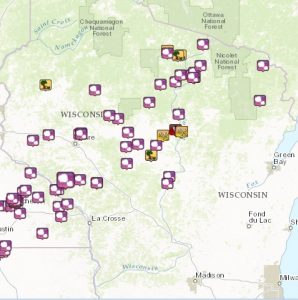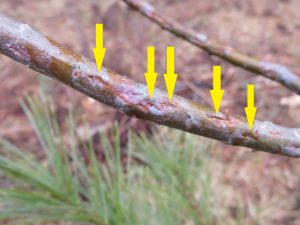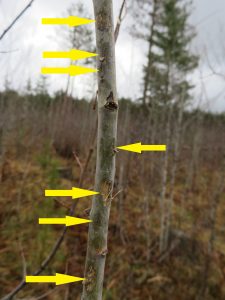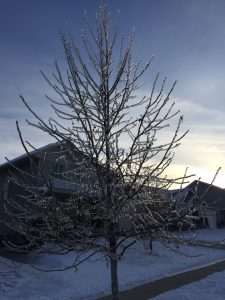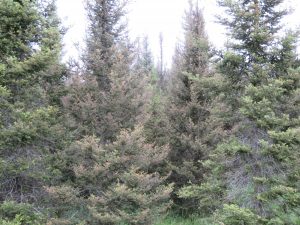
The two center balsam fir are severely defoliated by spruce budworm while the outer two trees are less severely defoliated.
Spruce budworm defoliation is starting to show up in the northern counties as the clipped foliage stuck in the caterpillar webbing turns rusty red. Defoliation this year may be reduced in some areas if the caterpillars were damaged by the multiple storms we’ve had this spring. Let us know where you’re seeing defoliation. The caterpillars should be pupating soon and moths will emerge a couple weeks after pupation. Spruce and balsam fir are defoliated by this pest, which is a native insect with periodic outbreaks.
Outbreaks occur every 30-50 years, and last for 10 years on average. Our previous outbreak ran from 1970-1980. Mature balsam fir and spruce are preferred hosts, although younger balsam or spruce can be defoliated as well. Repeated defoliation can cause top-kill and eventually whole tree mortality. Balsam fir stands, or stands with a heavy component of balsam fir, are often more severely impacted, but don’t let that fool you into thinking it won’t defoliate pure spruce stands. Continue reading “Spruce budworm defoliation showing up”

